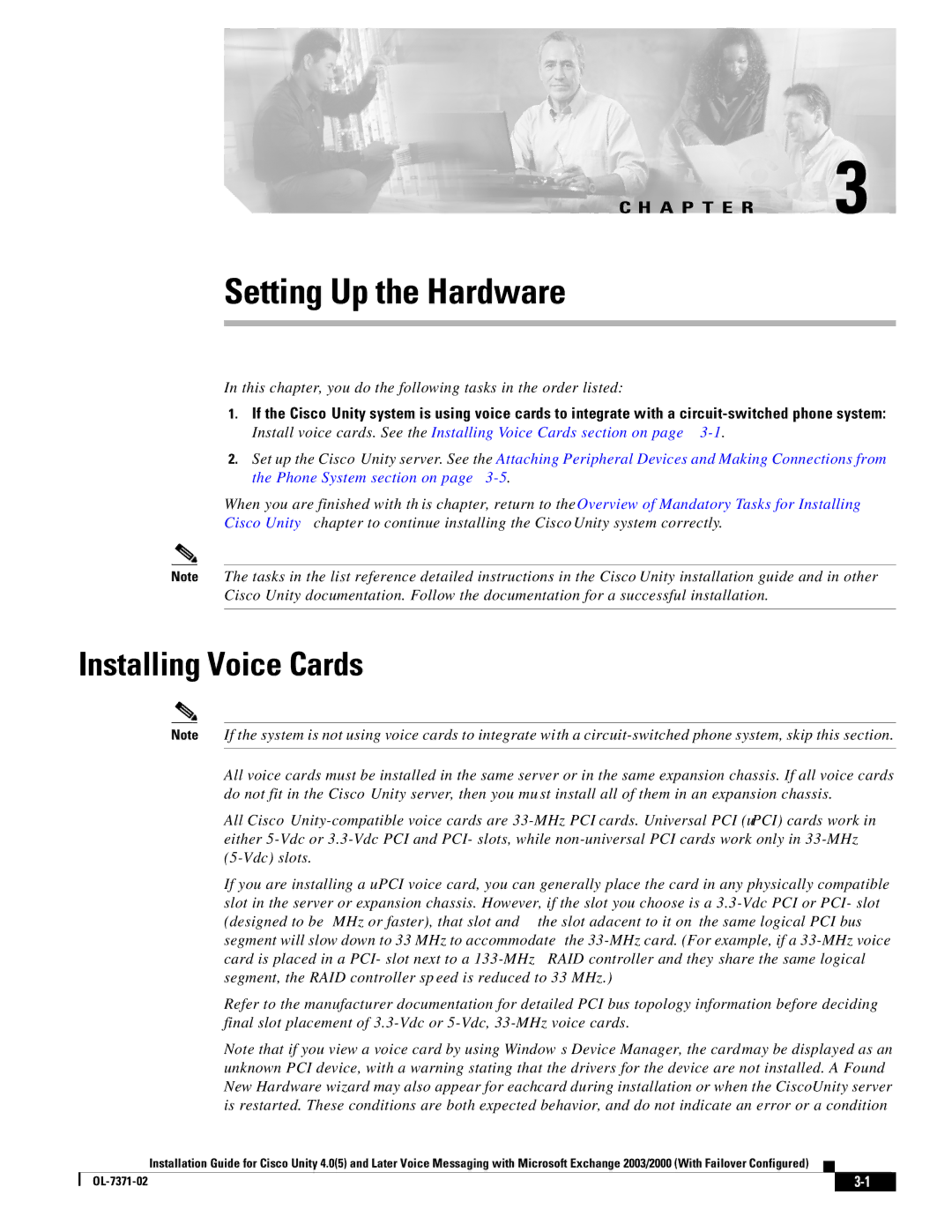
C H A P T E R 3
Setting Up the Hardware
In this chapter, you do the following tasks in the order listed:
1.If the Cisco Unity system is using voice cards to integrate with a
2.Set up the Cisco Unity server. See the “Attaching Peripheral Devices and Making Connections from the Phone System” section on page
When you are finished with this chapter, return to the “Overview of Mandatory Tasks for Installing Cisco Unity” chapter to continue installing the Cisco Unity system correctly.
Note The tasks in the list reference detailed instructions in the Cisco Unity installation guide and in other Cisco Unity documentation. Follow the documentation for a successful installation.
Installing Voice Cards
Note If the system is not using voice cards to integrate with a
All voice cards must be installed in the same server or in the same expansion chassis. If all voice cards do not fit in the Cisco Unity server, then you must install all of them in an expansion chassis.
All Cisco
If you are installing a uPCI voice card, you can generally place the card in any physically compatible slot in the server or expansion chassis. However, if the slot you choose is a
Refer to the manufacturer documentation for detailed PCI bus topology information before deciding final slot placement of
Note that if you view a voice card by using Windows Device Manager, the card may be displayed as an unknown PCI device, with a warning stating that the drivers for the device are not installed. A Found New Hardware wizard may also appear for each card during installation or when the Cisco Unity server is restarted. These conditions are both expected behavior, and do not indicate an error or a condition
Installation Guide for Cisco Unity 4.0(5) and Later Voice Messaging with Microsoft Exchange 2003/2000 (With Failover Configured)
|
|
| |
|
|
